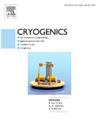非冷凝气体对1g和微重力储罐自增压和压力控制影响的尖锐界面CFD分析
IF 2.1
3区 工程技术
Q3 PHYSICS, APPLIED
引用次数: 0
摘要
在未来的燃料补给站和空间操作中,不可冷凝气体(NCG)可以用作压力剂来提取液体推进剂,用于油箱到油箱的转移和发动机启动操作。不凝性气体一旦进入储层,就会影响控制储罐自增压和后续储存过程中压力控制的界面蒸发和冷凝过程。为了研究这些现象,进行了零蒸发罐不凝水(ZBOT-NC)实验及其相关的计算模型开发工作。本文以全氟正戊烷(PnP)为模拟低沸点相变流体,氙气为不凝性气体,建立了一种适用于ZBOT-NC实验中两相双组分模拟流体体系的尖锐界面CFD (SI-CFD)模型。SI-CFD模型解决了蒸汽和液相的连续性、动量、能量、物质和湍流方程,同时提供了非常精确的界面温度和物质梯度计算。在建立该模型的过程中,特别注意精确测定界面处蒸汽和不凝气体的摩尔浓度,以便正确预测蒸汽“斯蒂芬风”,以及相锋处不凝气体的积聚程度。通过详细的微重力和1g数值模拟和分析,揭示了罐体自增压和射流混合压力控制过程中液体中不凝性气体诱导输运阻力的特性,以及液体中的热毛细(Marangoni)对流对界面传热传质的影响。模拟结果表明,在1g条件下,不凝性气体的存在显著影响压力控制,但对自增压的影响最小。然而,在微重力条件下,不凝性气体在自增压过程中似乎有明显的影响,而它对射流混合压力控制的影响是显著的,而且比在地球上明显得多。本文章由计算机程序翻译,如有差异,请以英文原文为准。
Sharp interface CFD analysis of noncondensable gas effects on 1g and microgravity tank self-pressurization and pressure control
In future refueling depot and space operations, noncondensable gases (NCG)s may be used as pressurants to extract liquid propellant for tank-to-tank transfer and engine start-up operations. Once it is present in the ullage, the noncondensable gas can affect the interfacial evaporation and condensation processes that control tank self-pressurization and pressure control during subsequent storage. The Zero Boil-Off Tank-Noncondensable (ZBOT-NC) Experiment and its associated computational model development effort are carried out to study these phenomena. In this work, we present a Sharp Interface CFD (SI-CFD) model which is applied to the two-phase and two-component simulant fluid system used in the ZBOT-NC Experiment with Perfluoro-n-Pentane (PnP) as the simulant low-boiling point phase change fluid, and Xenon as the noncondensable gas. The SI-CFD model solves the continuity, momentum, energy, species, and turbulence equations in the vapor and liquid phases while providing very accurate temperature and species gradient calculations at the interface. In developing this model, particular attention was focused on the precise determination of the molar concentrations of the vapor and the noncondensable gas at the interface in order to correctly predict the vapor “Stefan wind” in the ullage, as well as the extent of the accumulation of the noncondensable gas at the phase front. Detailed microgravity and 1g numerical simulations and analyses are presented to show the characteristics of the noncondensable gas induced transport resistance in the ullage, along with the thermocapillary (Marangoni) convection in the liquid and their impact on the interfacial heat and mass transfer during tank self-pressurization and jet mixing pressure control. The results of these simulations indicate that, in 1g, the presence of the noncondensable gas affects pressure control noticeably but its impact on self-pressurization is minimal. However, in microgravity, the noncondensable gas seems to have a noticeable impact during self-pressurization while its effect on jet mixing pressure control is significant and considerably more pronounced than on earth.
求助全文
通过发布文献求助,成功后即可免费获取论文全文。
去求助
来源期刊

Cryogenics
物理-热力学
CiteScore
3.80
自引率
9.50%
发文量
0
审稿时长
2.1 months
期刊介绍:
Cryogenics is the world''s leading journal focusing on all aspects of cryoengineering and cryogenics. Papers published in Cryogenics cover a wide variety of subjects in low temperature engineering and research. Among the areas covered are:
- Applications of superconductivity: magnets, electronics, devices
- Superconductors and their properties
- Properties of materials: metals, alloys, composites, polymers, insulations
- New applications of cryogenic technology to processes, devices, machinery
- Refrigeration and liquefaction technology
- Thermodynamics
- Fluid properties and fluid mechanics
- Heat transfer
- Thermometry and measurement science
- Cryogenics in medicine
- Cryoelectronics
 求助内容:
求助内容: 应助结果提醒方式:
应助结果提醒方式:


